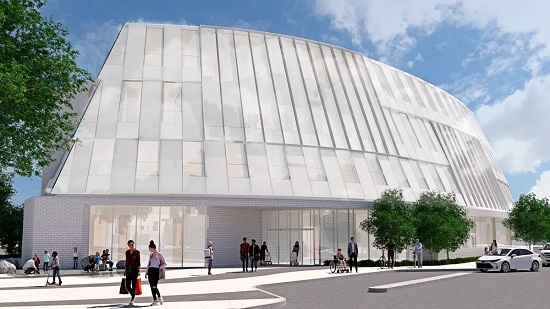 Thursday, October 3, 2024
Thursday, October 3, 2024  Thursday, October 3, 2024
Thursday, October 3, 2024 
At a new downtown Toronto bank tower, construction wraps up later this year on a meeting room that evokes local First Nations history in a space meant to welcome all visitors.
Indigenous architects designed the 11.7-metre-by-5.8-metre room in one of two towers of the new Bay Street headquarters of the Canadian Imperial Bank of Commerce, with furniture by First Nations artisans.
The project – like a new $134-million public library opening in Saskatoon in 2026 – signals growing interest in hiring Indigenous architects and opening doors to reconciliation between Indigenous and non-Indigenous Canadians.
CIBC’s room “was developed working with principles of intentional design and we knew it was key to have Indigenous voices at the forefront,” says Jaimie Lickers, vice-president of Indigenous markets at CIBC, who is Onondaga and from the Haudenosaunee community of Six Nations of the Grand River. “The idea of creating new spaces is to build areas where intentional reconciliation can grow.”
CIBC consulted Indigenous employees and clients, local First Nations leaders and non-Indigenous allies. Aided by the Gord Downie & Chanie Wenjack Fund (which supports the creation of “legacy spaces” to promote reconciliation), CIBC selected the Indigenous Design Studio, a specialty practice at Brook McIlroy.
“It is really powerful when you have Indigenous practitioners and people on every side of the project,” says architect Ryan Gorrie, a member of Sand Point First Nations who leads the Winnipeg-based studio. “It makes for a dynamic and powerful project.”
One of the room’s striking features is a vaulted ceiling of solid carved oak and wood-veneer ribbing that flows seamlessly into one wall, inspired by Anishinaabe teaching lodges and the longhouses of Huron-Wendat and Haudenosaunee villages. Three large circular ceiling lights allude to the Council of Three Fires, an alliance of Ojibwe, Odawa and Potawatomi Nations. Etched on glass walls are the names of signatories to the Toronto Purchase that marked the sale of land by the Mississaugas of New Credit to Britain.
Keep reading in The Globe and Mail